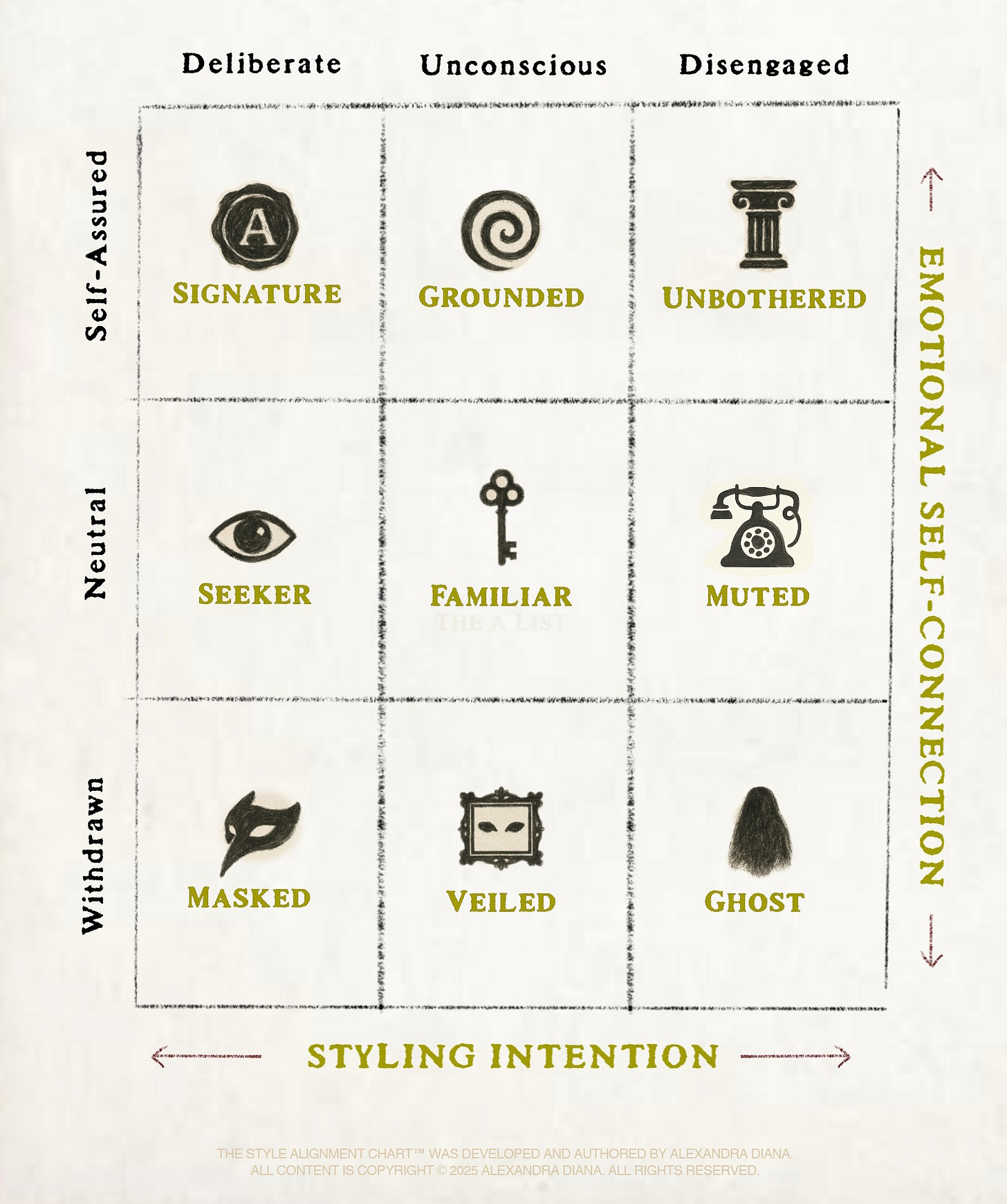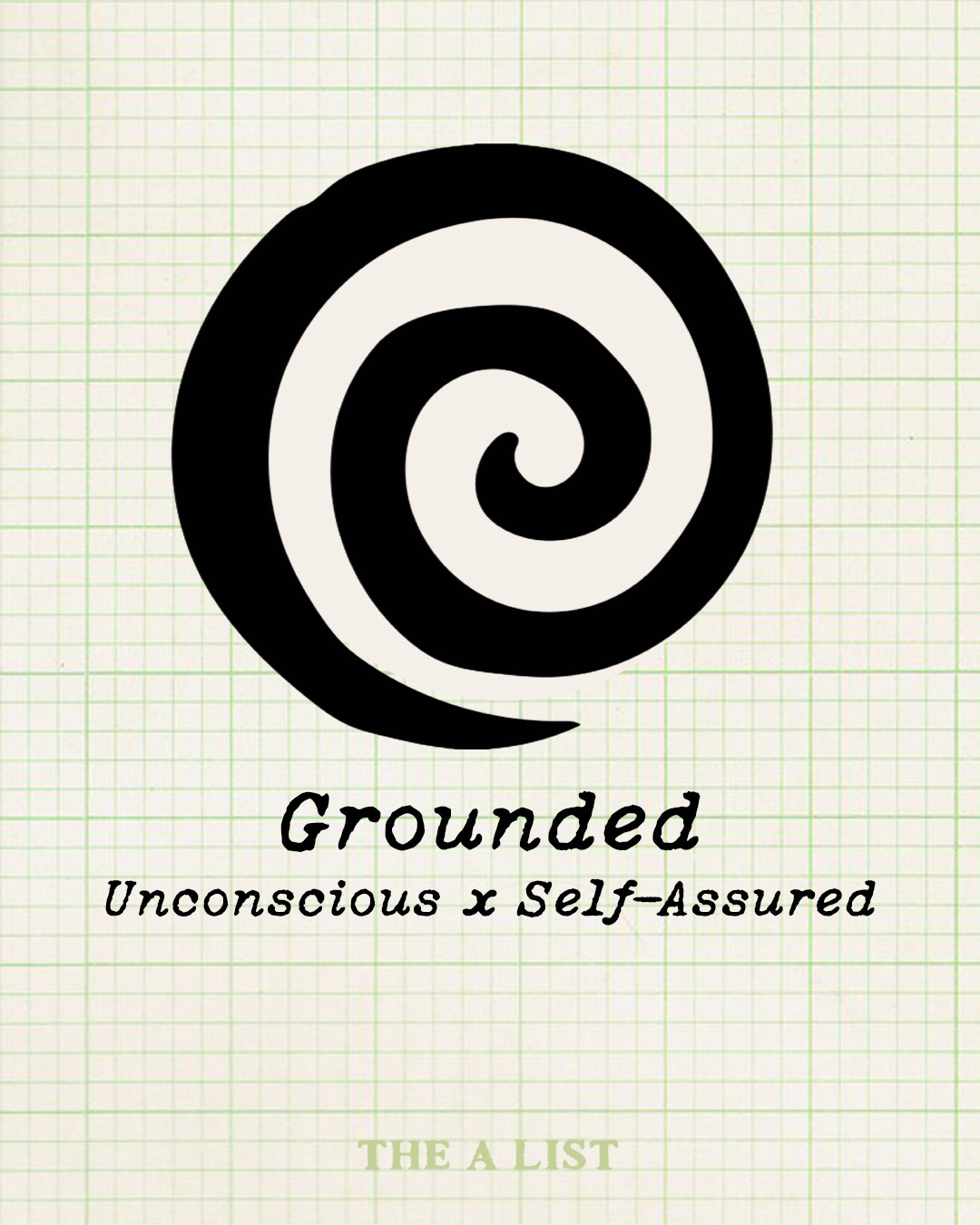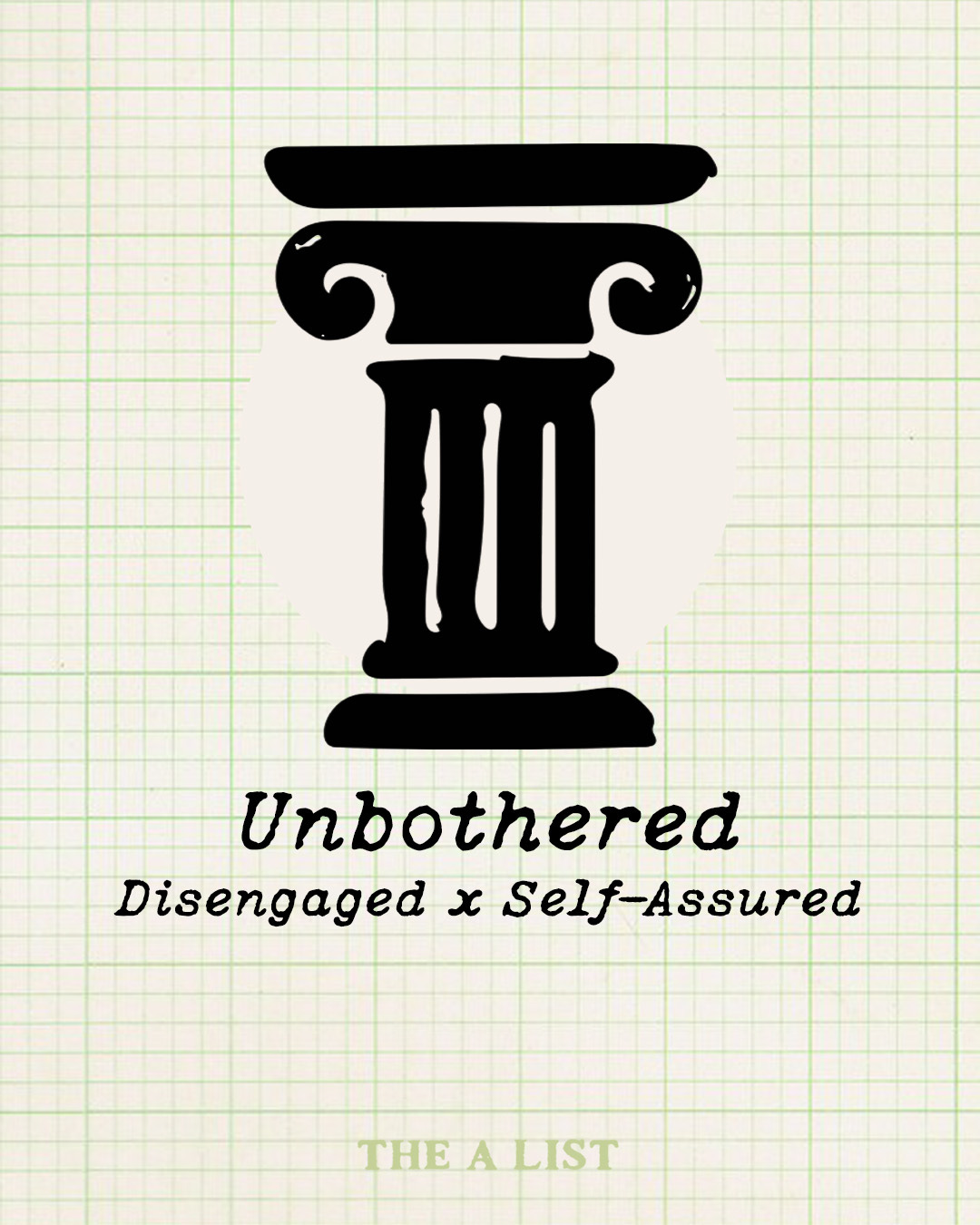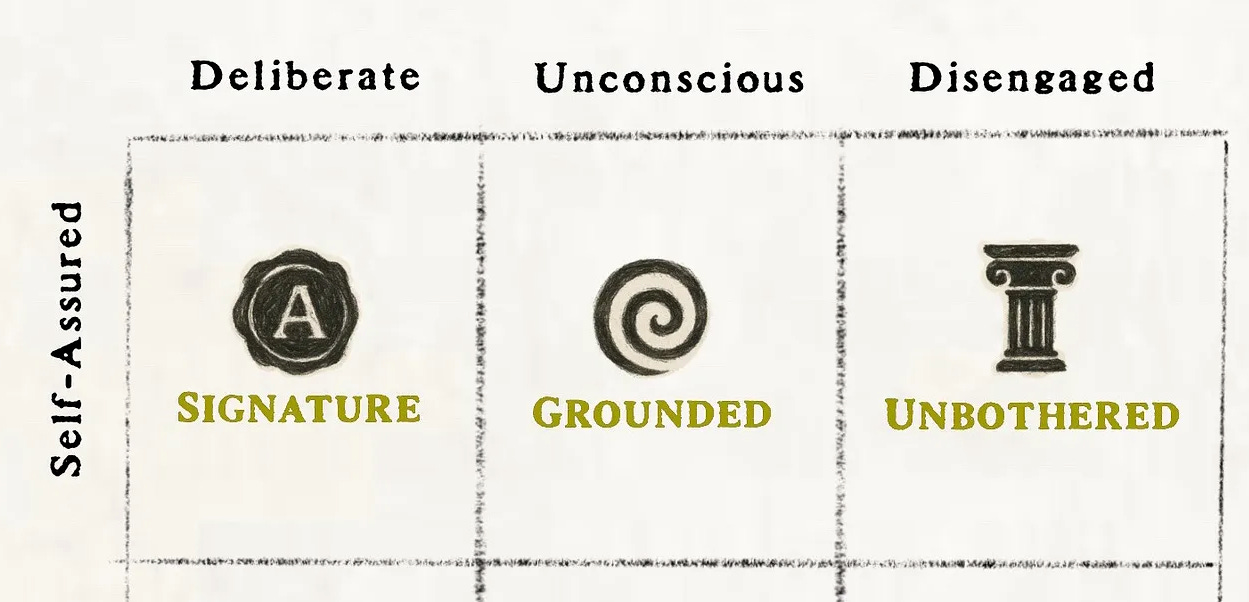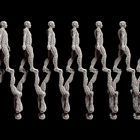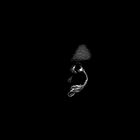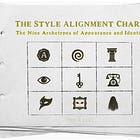Inside the Alignment Chart: The Self-Assured Row
Style, when the self is already aligned.
The Signature Self is a study of personal style as behavioral evidence. It explores how we present ourselves, and how those presentations reveal the alignment of our inner and outer lives.
When you meet them, you know.
The way they move, the way they talk; the way they exist so freely it makes their style seem effortless, inevitable.
You’ll notice what they’re wearing, not because it’s loud, but because of the way it seems to personify them. No matter the attire, they feel free, unconstructed. They don’t posture or waver, they just exist in an entirely self-coherent way.
This is who lives at the top of the Style Alignment Chart: the self-assured, emotionally aligned.
Each time we put on an outfit, each time we step into our personal style, we reflect our interior emotions, outward.
These archetypes, The Signature, The Grounded, and The Unbothered, holds a distinct relationship to style. One symbolic, one habitual, one ambient. What unites these three is not how they look, but how they relate to their appearance: they relate with clarity, coherence, and emotional stability.
They hold no longing to please, or guilt about their choices. They are the people who seem to be ‘allowed’ to wear whatever they want, even going against a societal norm. They’re not punished for it, though, because their break from conformity doesn’t make anyone else feel challenged.
Quite simply, they’re resolved.
The Style Alignment Chart: A Conceptual Map
The Style Alignment Chart is a two-axis framework:
Vertical axis: Psychological grounding (from Self-Assured to Withdrawn)
Horizontal axis: Relationship to style (from Deliberate to Disengaged)
Each archetype is positioned where these two forces intersect: intention and identity, presentation and perception.
We begin here, at the top: the Self-Assured Row.
What Self-Assurance Means in This System
Self-assurance is not prestige. It is not popularity. It is not polish.
In psychological terms, it reflects:
A secure internal locus of control (Rotter, 1966): the belief that one’s outcomes are shaped by personal choices, not by external forces or luck.
Low need for external validation (Deci & Ryan’s Self-Determination Theory): motivation and self-worth are driven by internal alignment, not by others’ approval.
A high degree of identity integration: when outer expression naturally reflects an inner self that feels whole, not in flux.
Each archetype in this row, The Signature, The Grounded, and The Unbothered, relates to style differently, however, each of them share a non-fractured relationship to the self.
How They Move Horizontally
Across the row, we see a shift in conscious intention:
The Signature makes visual decisions with care, symbolism, and authorship. Think: the person who feels editorial even in passing—styled not to impress, but because they inhabit their own world.
The Grounded does not over-think their style, however their choices remain congruent, stable, and unconcerned with trends. Think: the person who’s worn the same jeans, sweater, and shoes for ten years—and somehow, it never looks wrong.
The Unbothered may appear careless, however their perceived lack of effort is supported by a deep-seated presence that makes them hard to ignore. Think: the person who never dresses up, yet always commands the room just by walking into it.
This is where we first see the Feedback Loop of Identity in action: how intention, appearance, and behavior reinforce or erode alignment.
✦ The Signature
“I dress with authorship.”
Distinguishing Traits:
Symbolic repetition: certain items appear again and again, not out of habit, but because they’re something they identify with (favorite color, motif, etc)
Visual consistency across settings: even if bold or eccentric, their style rarely drifts; it belongs to a personal system
Style affirms identity, not approval: every choice points inward, not outward; they dress to reinforce who they are, not to be validated
✦ The Grounded
“I dress with consistency.”
Distinguishing Traits:
Unchanged visual habits across environments: they find what works and rarely reconsider; not out of resistance, but because no friction exists
No aesthetic self-questioning: they don’t wonder how they look, because they don’t wonder who they are
Stability of presence without curation: their stability of self is a habit, not a practice, and their style quietly reflects it
✦ The Unbothered
“I dress with indifference.”
Distinguishing Traits:
Effortless to the point of absence: their clothes may seem incidental, but their presence never is. Another way to say, they may look careless, but theyr’re never insecure
Completely detached from mainstream style: trends don’t tempt them, and commentary never sticks
Charisma that overrides dress: their authority isn’t in what they wear, but in how little it seems to matter
In Closing
Those who occupy this row don’t ask to be noticed, they simply are. Their level of self-assurance flows through all of their choices, making them impossible to mimic. Their style is all their own; deviod of trends, pretenstion, or the need for social approval.
Next time,
we’ll be discussing the middle row, which houses: The Seeker, The Masked, and The Muted. A row shaped by transition, tension, and self-negotiation. But don’t worry, we’ll make it fun. ;)
So go out, be brave, be bold, don't be afraid of being ugly or silly or strange!
Wear the things you love and try a thousand new things along the way.
You have the magnificent, unique ability to express your inner world in a way that no one else ever could.
Your style is not a performance.
It is a self-fulfilling prophecy.
With great personal aesthetic,
Alexandra Diana, The A List
The Alignment Appendix
Bibliography:
Deci, E. L., & Ryan, R. M. (1985). Self-Determination Theory and the Facilitation of Intrinsic Motivation, Social Development, and Well-Being.
Rotter, J. B. (1966). Generalized expectancies for internal versus external control of reinforcement. Psychological Monographs.
McAdams, D. P. (1993). The Stories We Live By: Personal Myths and the Making of the Self.
Goffman, E. (1959). The Presentation of Self in Everyday Life.
Adam Galinsky et al. (2012). Enclothed Cognition. Journal of Experimental Social Psychology.
Ainsworth, M. D. S. (1979). Infant–mother attachment. American Psychologist.




